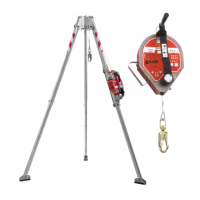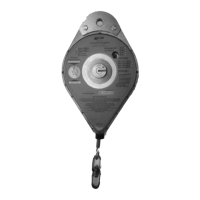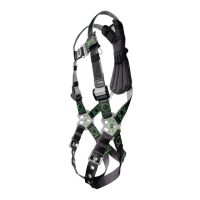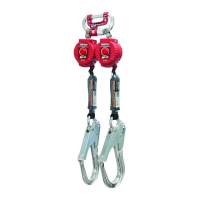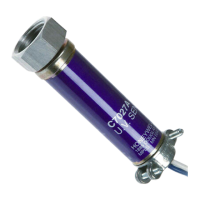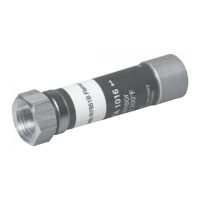8VHU,QVWUXFWLRQV(QJOLVK
3.0 Installation/Use
Connecting to the Harness
$OZD\VFRQQHFWWKHOLIHOLQHHQGVQDSKRRNZLWKDWWDFKHG6RI6WRS/(6KRFN$EVRUEHUWRWKHEDFN
'ULQJRIWKHIXOOERG\KDUQHVV9HULI\WKDWWKHVQDSKRRNLVFRPSOHWHO\FORVHGDQGORFNHG
:$51,1*1HYHUXVHWKLVGHYLFHLQDUHYHUVHFRQÀJXUDWLRQZKHUHE\WKHERG\
of the retractable unit is attached to the worker’s back D-ring.
Installing to the Anchorage
NOTE:
Overhead mounting of a self-retracting lifeline is typically recommended. However,
0LOOHU0LJKW\/LWH/HDGLQJ(GJH6HOI5HWUDFWLQJ/LIHOLQHVKDYHEHHQVSHFL¿FDOO\GHVLJQHGDQG
extensively tested for horizontal leading edge use. In accordance with ANSI Z359.14,
Miller
Leading Edge SRLs have been successfully tested for horizontal use and falls over a
steel edge without burrs. As a result, these devices may be used in situations where a
fall may occur over similar edges, such as found on steel shapes and metal sheeting.
6HOHFWDQDSSURYHGPRXQWLQJORFDWLRQWKDWPHHWVDOODQFKRUDJHUHTXLUHPHQWVDVVSHFL¿HGLQ
WKLVLQVWUXFWLRQVXSSOHPHQWDQG,0LOOHU6HOI5HWUDFWLQJ/LIHOLQHV8VHU,QVWUXFWLRQ0DQXDO
Requirements, Warnings & Limitations
The anchor point must be at the same height or higher than the edge at which a fall
might occur.
The allowable angle of redirection of the lifeline portion of the device at the edge
over which a fall might occur (as measured between the two sides formed by the
redirected lanyard) shall be at least 90 degrees.
The potential for a swing fall must be minimized for worker and lifeline protection.
The worker must never work on the far side of an opening, opposite the anchor
point.
0LOOHU/HDGLQJ(GJH6HOI5HWUDFWLQJ/LIHOLQHVDUHVSHFL¿FDOO\GHVLJQHGWRUHGXFH
forces to both the worker and cable connection that extends beyond a leading edge.
Applications for this leading edge retractable include steel decking, concrete and
wood surfaces. Despite the wide range of applications for this system, surfaces in
FRQWDFWZLWKWKHHTXLSPHQWPXVWVWLOOEHHYDOXDWHGE\DTXDOL¿HGSHUVRQLQUHJDUGV
to creating premature wear and/or failure due to excessive abrasion or cutting of
materials.
Miller Leading Edge Self-Retracting Lifelines may be used with horizontal lifeline
systems with special considerations. The leading edge retractable must be capable
of travelling well along the length of the lifeline and should remain perpedicular
to the worker throughout the course of work. It is recommended that an on-site
TXDOL¿HGSHUVRQHYDOXDWHWKHFRQGLWLRQVEHIRUHLQVWDOODWLRQDQGXVHRID0LOOHU
leading edge retractable with the horizontal lifeline system.
Always ensure that there is adequate fall clearance below the work surface and that
no swing fall hazards exist. Also ensure that there are no obstructions in the path
that the lifeline may follow should a fall occur.
In the event of a fall, special rescue procedures may be necessary. There must
be a rescue plan in place and the means at hand to implement it when using this
equipment.
NOTE: For overhead installation applications, follow the instructions provided in
I267--Miller Self-Retracting Lifelines User Instruction Manual. The following requirements,
warnings, limitations and instructions pertain to leading edge applications.

